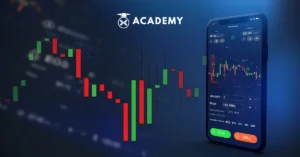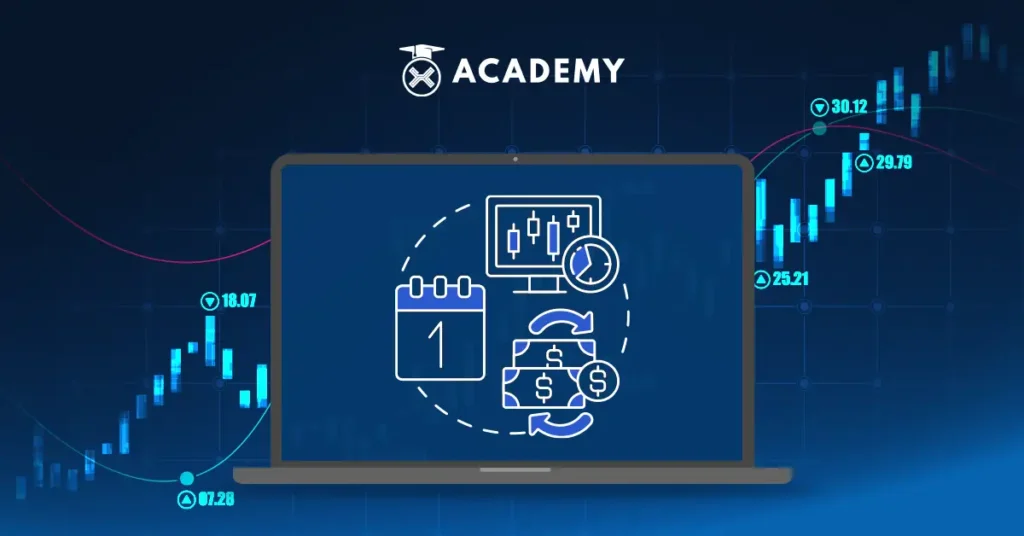In the world of trading, traders practice several trading strategies. In crypto (trading), the term intraday refers to the strategy of opening and closing positions on crypto assets within the same day.
Traders often choose to implement this strategy because the goal is to gain profits in the short term.
To understand intraday, from the definition and benefits to how to use it, check out the full review below!
What is Intraday Trading?
Quoting indovestory.com, intraday trading, also known as intraday is a trading strategy or style in which stocks or other financial instruments are bought and sold within the same day, or stocks are bought and sold the next day, not exceeding the limit of three trading days.
Many traders apply this strategy to make profits in the short term. Therefore, intraday traders actively monitor intraday price movements through real-time charts to capitalize on price fluctuations in the short term.
Intraday Fundamentals
Intraday is often used to refer to new peaks and troughs of a particular security.
For example, a “new intraday peak” means that the security reached a new peak relative to all other prices during the trading session. Sometimes, the intraday peak can be the same as the closing price.
Traders watch intraday price movements closely using real-time charts to profit from short-term fluctuations.
Short-term traders typically use one, five, 15, 30, and 60-minute intraday charts when trading within a market day.
Intraday scalping strategies generally rely on one and five-minute charts for high-speed trading.
Other intraday trading strategies might use 30 and 60-minute charts for trades with holding times of several hours.
Scalping is a strategy for dealing with many daily trades, hoping to profit from small movements in stock prices.
Intraday traders may hold their positions longer but still operate with high risk.
Volume Weighted Average Price (VWAP) orders are often used intraday to improve trade execution efficiency by exposing orders at various prices throughout the trading day.
VWAP provides the average price traded by a particular security throughout the trading day.
Intraday Technical Indicators

Traders often use technical indicators to analyze real-time asset price movements over time.
The results of this analysis are then used to confirm and forecast trends in the market, determine buying and selling decisions, and design trading strategies.
Prashant Raut of Trading Fuel mentions some of the best indicators that can be used in intraday trading, including:
1. Oscillator
Oscillators are indicators that show an asset’s up and down price fluctuations. According to advice from Tanay Goyanka of Capitalvia, the Exponential Moving Average indicator is highly recommended for intraday trading.
This is because the Moving Average indicator has been proven to help traders forecast price trend movements based on historical data. In addition, Stochastic is also a popular oscillator indicator for intraday trading, along with MACD, RSI, and CCI.
2. Volume
Volume indicators provide information about the asset price and the trading volume of the trade. Combined, they provide additional support in analyzing price trends in the market.
Tanay Goyanka points out that VWAP (Volume Weighted Average Price) and OBV (On Balance Volume) are among the volume indicators often used in intraday trading.
3. Overlays
There is also the Overlays indicator, a combination of the Moving Average and Bollinger Bands indicators.
Popular Intraday Strategies
Keep in mind that traders use various intraday strategies. These strategies include:
- Scalping: Creating profits from small price changes daily by making as many trades as possible.
- Range Trading: Using support and resistance levels to make buying and selling decisions.
- News-based Trading: Taking trading opportunities in response to increased volatility around important economic news announcements.
- High-frequency Trading Strategy: Uses sophisticated algorithms to exploit imperfections or short-term market fluctuations.
Pros and Cons of Intraday Trading
The biggest benefit of intraday trading is that positions are not affected by possible overnight negative news that could affect security prices significantly.
News such as important economic and earnings reports, broker rating upgrades, and downgrades occur either before or after the market closes. Trading on an intraday basis offers several other key advantages.
One is the ability to use tight stop-loss orders, raising the stop price to minimize losses from long positions.
Other advantages include greater access to margin and, therefore, greater leverage. Intraday trading also provides traders with more learning opportunities. However, with every advantage, there are always risks.
The disadvantages of intraday trading include insufficient time for positions to see a profit rise.
In some cases, there may be no profit and increased commission costs due to more frequent trading, reducing the profit margin a trader can expect.
Pros
- Positions are not affected by risks from overnight news or broker movements outside of trading hours.
- Tight stop-loss orders can protect positions.
- Regular traders have access to higher leverage.
- The large number of trades increases the hands-on learning experience.
Cons
- Frequent trading means multiple commission fees.
- Some assets are not accessible, such as mutual funds.
- There may not be enough time for a position to reach profit before it has to be closed.
- Losses can mount up quickly, especially if the margin is used to fund the purchase.
Intraday Time-Frame
The Bullish India team emphasizes the importance of time-frames as one of the key elements in trading. Short-term traders involved in intraday trading of stocks or other financial instruments always monitor price movements through real-time charts.
The data is a foundation for them to design strategies and optimize trading results. According to Troy, some of the most suitable time-frames for intraday trading are 1, 5, 30, and 60 minutes.
Ashok from Learn Stock Market supports this view and mentions that short-term traders often use 15- and 30-minute time-frames as the most common time frames.
Ashok adds that time-frames between 1 and 5 minutes are also often used in scalping, a term for trades made within a few seconds or minutes.
Intraday Trading Strategy

Prashant Raut believes that the key to success in intraday trading lies in 10% execution and 90% patience. Any strategy execution should be based on real-time ongoing market conditions.
Here are some intraday trading strategies that you can try, including:
- Scalping
In Troy’s view, scalping is a trading strategy involving multiple daily transactions to profit from small fluctuations in asset prices.
Transactions in scalping take place over a short period, just a few seconds or minutes.
According to him, if intraday traders maintain positions longer, the risks increase significantly.
- Range Trading
Range trading is a trading strategy based on the assumption that an asset’s price will tend to approach its average price range over a longer period of time.
Troy states that traders can make more informed asset buying and selling decisions by considering range trading along with support and resistance levels.
Prashant Raut adds that range trading is useful for selecting types of assets that have the potential to be traded. The upper and lower limits of the range can be observed in the initial 30-60 minutes in the asset price chart.
- News-based Trading
This trading strategy does not emphasize price and trading volume but rather trusted news sites and potential information that could affect price movements.
According to Prashant Raut, this strategy is generally only used by traders with sufficient understanding and knowledge of market conditions.
As a disclaimer, the above information regarding intraday trading strategies is educational and does not constitute investment advice or recommendations. The decision to use the strategy is entirely the responsibility of each investor.
Tips for Learning Intraday Trading
Before starting intraday trading, some tips can help increase the chances of success and reduce the risk of loss. Here are some intraday trading tips to know, including:
1. Noticing trendlines for buy/sell positions
In intraday trading, trendline observation is very important. Two possible trendline patterns may form. First, when there is an uptrend (bullish), you can open a “buy” position.
Second, when the trend shows a downward direction (bearish), you can open a “sell” position. Traders should also be aware of market conditions that tend to be sideways or erratic to avoid opening inappropriate “buy” or “sell” positions.
2. Determine trading capital and lots according to your needs
After analyzing the position to buy or sell, the next step is to place an order. There are several types of orders in trading, including market orders, limit entry orders, stop entry orders, stop loss orders, and trailing stop orders.
A trader should be able to choose the appropriate order type according to the analysis that has been done.
3. Using appropriate time frames
An intraday trader needs to utilize time frames to keep an eye on price fluctuations up and down, enabling informed decisions on whether to buy or sell.
Some experts recommend setting a time frame of around 1 to 15 minutes to 1 hour for intraday traders.
Conclusion
In conclusion, intraday strategies emphasize the importance of execution and patience as the main keys to success.
Approaches such as Scalping, Range Trading, and News-Based Trading can be applied with special attention to time frame selection, around 1 to 15 minutes to 1 hour.
In addition, an in-depth understanding of the types of orders, including market orders, limit entry orders, stop entry orders, stop loss orders, and trailing stop orders, is also very important.
Recognizing trends by paying attention to trendlines, both uptrends (bullish) and downtrends (bearish), before opening long or short positions is also important.
Awareness of market conditions that may be sideways or erratic is also an important factor in avoiding inappropriate trading decisions.
In addition, you can explore more interesting articles in the INDODAX Academy article collection to broaden your horizons.
INDODAX Academy presents a variety of materials that cover various levels of understanding, starting from basic concepts to more in-depth aspects related to blockchain technology.
Don’t miss the opportunity to improve your knowledge about blockchain and crypto assets. Let’s find more useful information only on INDODAX Academy!
Trading with Over-the-Counter (OTC) Feature on INDODAX
Well, now you understand intraday, from understanding benefits to how to use it.
Furthermore, if you plan to use personalized services to trade crypto assets in amounts too large to be processed through the order book, and if you are interested, you can visit the Bitcoin OTC page on INDODAX.
It is important to note that prices in OTC services will always follow market price movements because transactions occur on the spot market. Even if the purchase amount increases, it does not guarantee a lower price.
The service is focused on the convenience of transactions for members, with a dedicated team guiding through the entire procedure, ensuring security, and safeguarding user privacy.
As a disclaimer, it should be understood that security and privacy remain the user’s responsibility.
OTC trading involves certain risks, and the decision to use these services is entirely up to the user. Therefore, it is important to research and understand the risks involved before starting.
So, what are you waiting for? Start OTC trading on INDODAX now!








